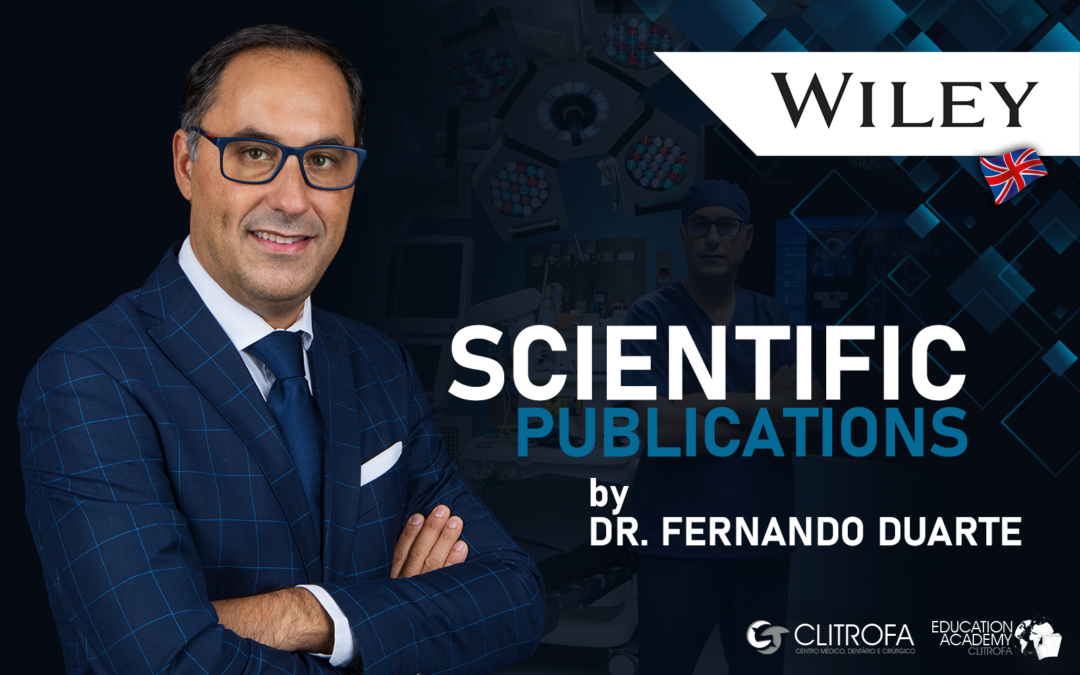Categoria: Peri-Implantite
Autors: Iria González Regueiro, Natalia Martínez Rodriguez, Cristina Barona Dorado, Ignacio Sanz-Sánchez, Eduardo Montero, Javier Ata-Ali, Fernando Duarte, José María Martínez-González.
Reference: Surgical approach combining implantoplasty and reconstructive therapy with locally delivered antibiotic in the treatment of peri-implantitis: A prospective clinical case series
Wiley Periodicals LLC | 2021; 1-10
DOI: 10.1111/cid.13049
Abstract: Nonsurgical treatment, resective surgery, reconstructive surgery, or combined approaches have been proposed for the treatment of peri-implantitis, with variable results.
Purpose: To evaluate the 1-year clinical and radiographic outcomes following combined resective and reconstructive surgical treatment with topical piperacillin/tazobactam antibiotic in the management of peri-implantitis.
Material and Methods: Forty-three patients diagnosed with peri-implantitis were included. Surgical treatment consisted of implantoplasty of the supra-crestal component of the defect, the application of a topical antibiotic solution over the implant surface, and subsequent reconstruction of the intra-osseous component of the periimplant defect. The primary outcome was disease resolution, defined as the absence of bleeding on probing (BoP) and/or suppuration on probing (SoP), a peri-implant pocket probing depth (PPD) ≤5 mm, and no bone loss >0.5 mm 1 year after surgery.
Secondary outcomes included changes in BoP, PPD, SoP, and peri-implant marginal bone levels. One implant per patient was included in the analysis.
Results: The treatment success rate of the 43 dental implants included in the study was 86% at 1 year after surgery. Mean PPD and BoP decreased from 6.41 ± 2.11 mm and 100% at baseline to 3.19 ± 0.99 mm (p < 0.001) and 14% (p < 0.001) at 1 year, respectively. SoP was significantly reduced from 48.8% at baseline to 0% 1 year after surgery (p < 0.001). Radiographically, a mean defect fill of 2.64 ± 1.59 mm was recorded (p < 0.001).
Conclusions: The combination of a resective and reconstructive surgical approach together with locally delivered antibiotic achieved a high disease resolution rate after 1 year of follow-up and constitutes a viable option for the management of peri-implantitis.
Implantes Zigomáticos: Alternativa no tratamento de maxilas atróficas
Um implante osteointegrado poderá ser de grande utilidade para a reabilitação dentária e mastigatória…
Planeamento Cirúrgico e Protético Virtual na Reabilitação de Pacientes Desdentados Totais
O conceito de planeamento cirúrgico e protético…
Osstell®: Frequência de Ressonância
A medição clínica da estabilidade do implante…
Nova Abordagem na Reabilitação de Pacientes Desdentados Totais: Técnica – “All-on-Ten
O princípio da osteointegração é clinicamente aplicado…
NobelGuide® – Planeamento Cirúrgico e Protético Virtual
O conceito de tratamento NobelGuide® da Nobel Biocare…
Implantes dentários em pacientes medicamente comprometidos – Parte I
As taxas de sucesso na colocação de implantes são variáveis…
Implantes dentários em pacientes medicamente comprometidos – Parte II
As taxas de sucesso na colocação de implantes são …
Brånemark Novum®: Uma nova alternativa na reabilitação oral
Os implantes do sistema Brånemark foram inicialmente…
Planeamento Cirúrgico e Protético Virtual do Implante Zygoma utilizando o sistema NobelGuide®
O novo conceito de tratamento NobelGuide®, da Nobel Biocare…
All-on-Ten – Função Imediata com Implantes Brånemark® em Pacientes Desdentados Totais
O princípio da osteointegração é clinicamente aplicado…

